Designed to help you quickly estimate oxygen requirements for efficient treatment.
×
We Value Your Feedback!
If you notice any issues or have suggestions, please share your feedback — it helps us improve your experience.
HOME • CALCULATORS
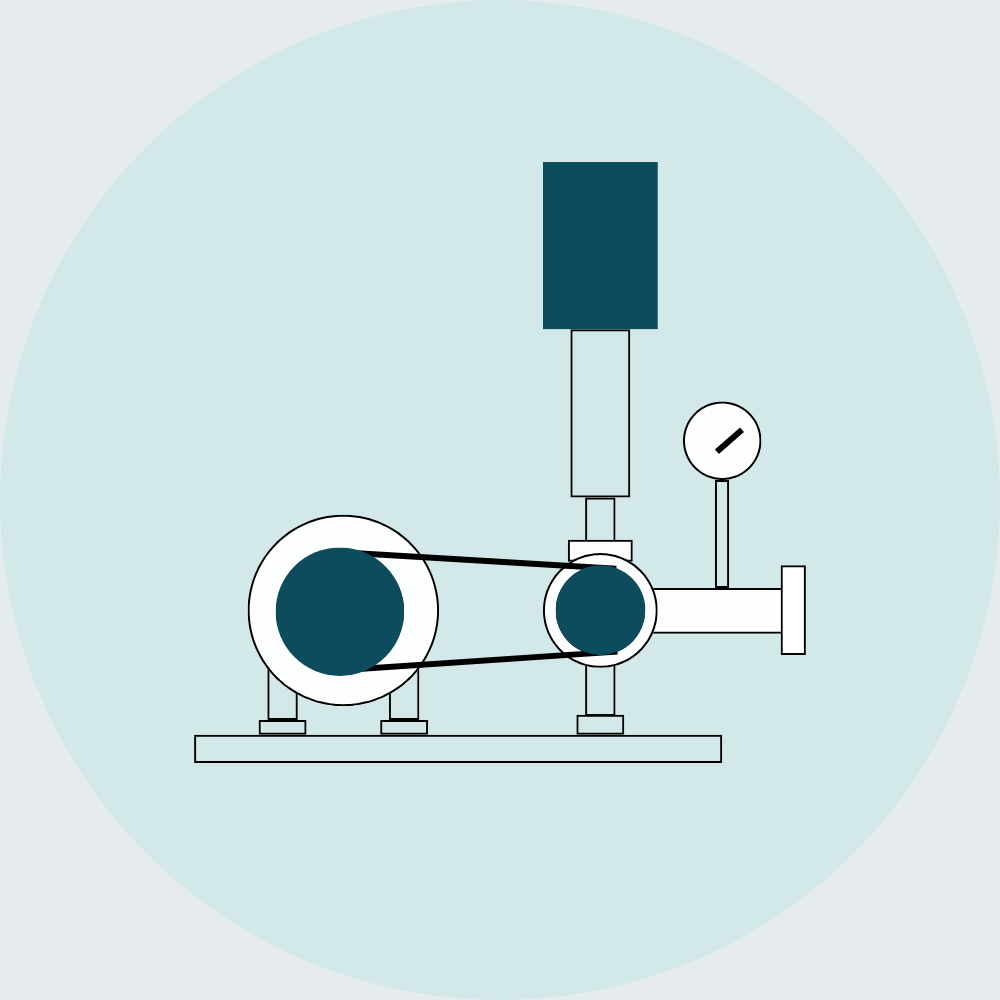
Aeration Calculation in
Wastewater Treatment
Aeration calculation determines the amount of oxygen needed to support biological treatment processes in wastewater. It helps size and optimize aeration systems for efficient pollutant removal and energy use. Ever wondered how wastewater gets cleaned before it’s released back into the environment? One of the key steps in that process happens in the aeration tank — a vital part of any modern treatment plant.
What is an Aeration Tank?
An aeration tank is where the real magic happens. It’s a tank where air (or oxygen) is mixed with wastewater to help break down organic matter using microorganisms. This step is essential in the wastewater treatment process and helps remove harmful substances before water is discharged or reused.
Why Calculate Aeration?
Accurate aeration calculation is crucial for the efficiency of the system. It tells us how much oxygen is needed to support the biological processes inside the aeration tank in wastewater treatment. Too little oxygen, and the treatment won’t be effective; too much, and energy is wasted.
Aeration Tank Design Matters
Proper aeration tank design ensures optimal oxygen transfer and mixing, keeping the treatment process energy-efficient and environmentally friendly. That’s why calculating the right parameters — like tank volume, airflow rate, and oxygen demand — is so important.
Want to simplify the process? Try our easy-to-use aeration calculator, specially curated to help you estimate your needs in just a few steps!
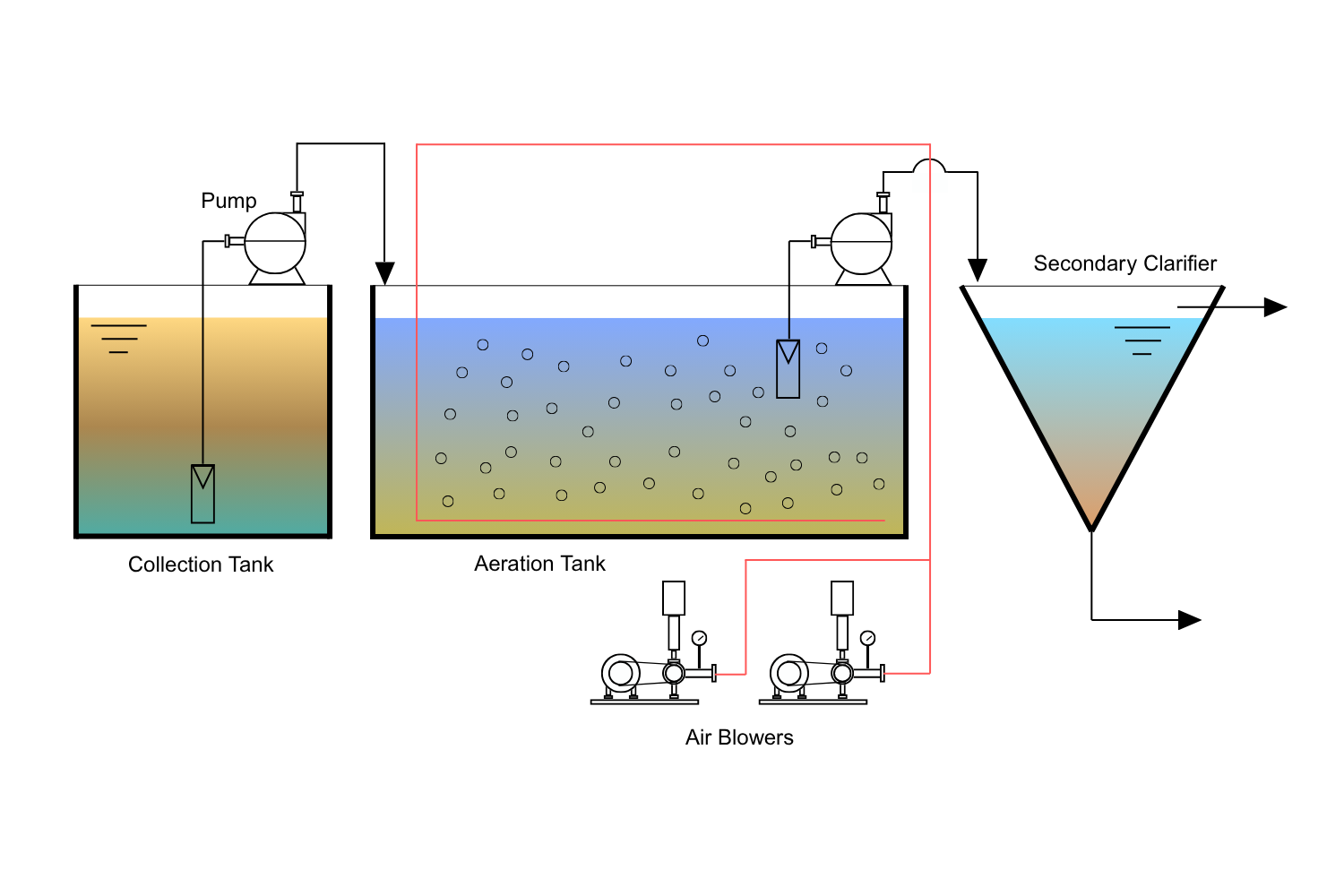
Start Building Your Aerators for Wastewater Treatment Plant
Calculate oxygen demand, AOTR, and power requirement interactively,
suitable for high-rate activated sludge plant (ASP) with complete mix.
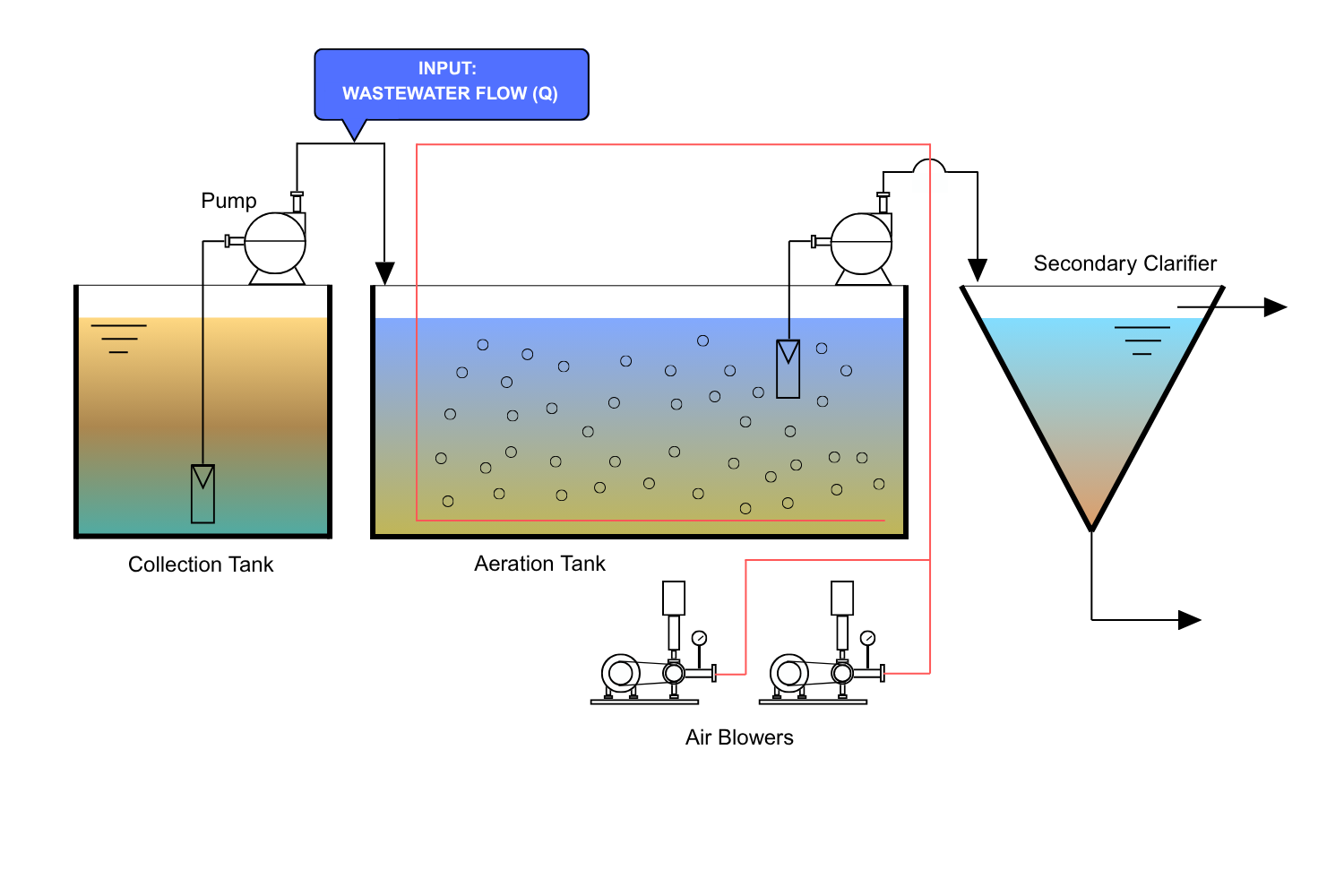
ADVERTISEMENT
1 of 6
Introduction to Aeration Tank

An Aeration Tank is a core unit in secondary treatment of wastewater, particularly in the Activated Sludge Process (ASP). It is where air (oxygen) is mixed with wastewater to support the growth of aerobic microorganisms that consume organic pollutants.
Purpose of Aeration
- To supply dissolved oxygen (DO) to microorganisms
- To keep the biomass suspended and mixed
- To enhance biological oxidation of BOD, COD, and nutrients
2 of 6
Types of Aeration Systems
A. Diffused Air Aeration
- Fine bubble diffusers or coarse bubble diffusers
- Installed at the bottom
- High oxygen transfer efficiency
B. Mechanical Surface Aerators
- Rotating impellers or paddles agitate the water surface
- Moderate oxygen transfer
- Also mix the tank contents
C. Jet Aeration
- Water and air mixed through jets
- High mixing and oxygenation
- Suitable for deeper tanks
D. Submerged Turbine Aerators
- Propellers near the bottom mix and aerate
- Used in deep tanks with high oxygen demand
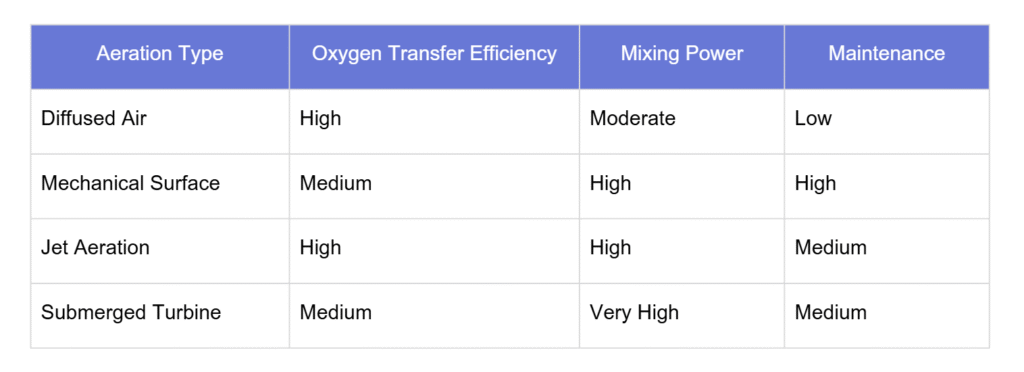
3 of 6
Important Design Formulas
A. Oxygen Requirement:

B. Oxygen Transfer Efficiency (OTE):

C. Standard Oxygen Transfer Rate (SOTR):

D. Power Requirement for Aeration:

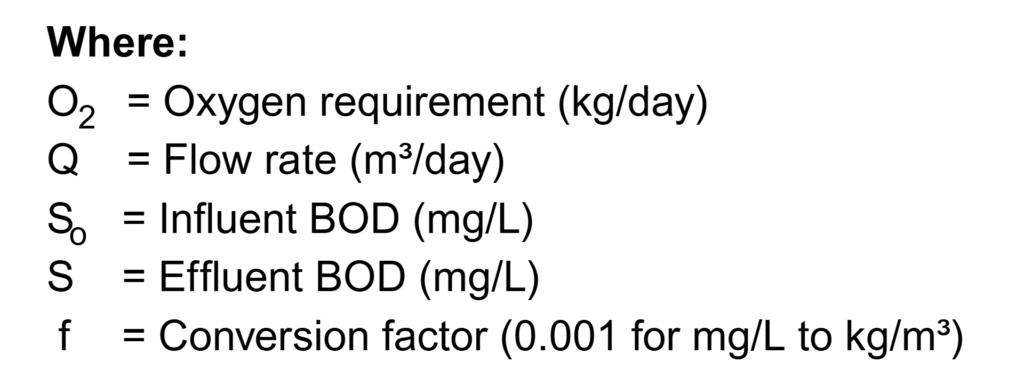
4 of 6
Actual Oxygen Transfer Rate (AOTR) Formula
To calculate how much oxygen an aeration device actually transfers into real wastewater conditions, we use this modified version of the standard oxygen transfer rate (Source: Metcalf and Eddy, fourth edition)

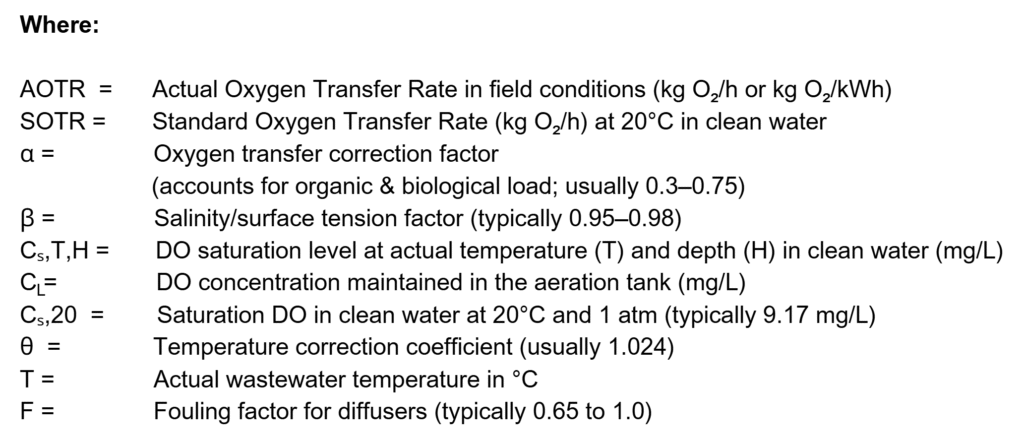
5 of 6
Aeration Tank Design Considerations
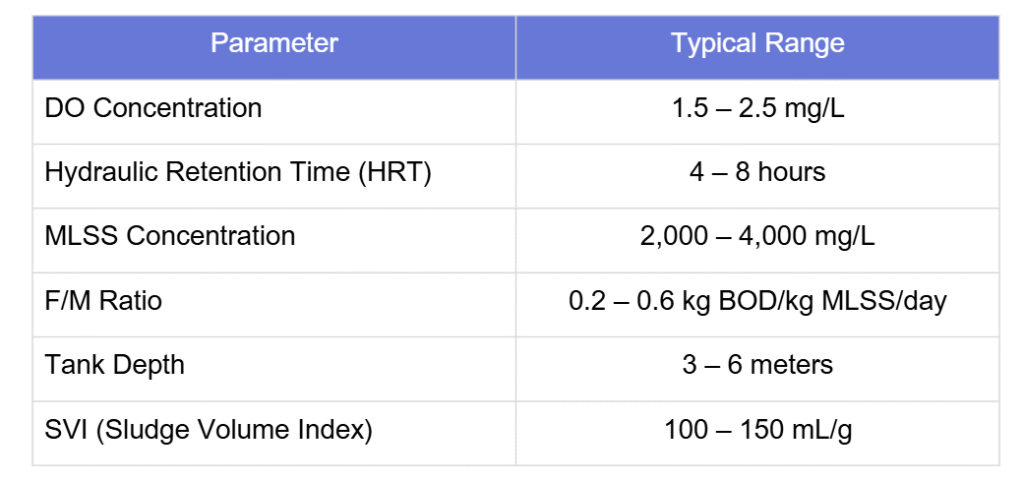
6 of 6
Sample Example Problem
Let these are the given parameters
- Flow rate (Q) = 12,000 m³/day
- Influent BOD (S₀) = 1200 mg/l
- Effluent BOD (S) = 150 mg/l
- SOTR = 3.2 kg O₂/kWh
- α.F = 0.45
- Wastewater temperature (T) = 18°C
- Residual DO (CL) = 3.5 mg/L
- β = 0.96
- O₂ saturation at 18°C & diffuser depth (Cₛ,T,H) = 9.40 mg/L
- O₂ saturation at 20°C (Cₛ,20) = 9.17 mg/L
- Peaking factor = 2.0
- θ = 1.024
Step 1: Calculate Oxygen Demand Using BOD Formula
We use the formula:

Substituting the values:
O₂ Requirement = 12,000 × (1200−150) × 0.001 = 12,000 × 1050 × 0.001 = 12,600 kg/day
Hourly Oxygen Demand = 12,600/24 = 525 kg O₂/h ———- A
Step 2: Calculate Actual Oxygen Transfer Rate (AOTR)
We use the equation:

Substitute the known values:
AOTR = 3.2 × 0.45 × 0.96 × ((9.40 – 3.5) / 9.17) × (1.024)^(18 – 20)
AOTR = 3.2 × 0.45 × 0.96 × 0.6435 × 0.953 = 0.847 kg O₂/kWh
✅ Therefore, AOTR ≈ 0.85 kg O₂/kWh ———– B
Oxygen transfer efficiency =AOTR/SOTR × 100% = (0.85 / 3.2) × 100% = 26.5%
Step 3: Power required for aeration
We use the equation:
Power required = Oxygen demand (from A) / AOTR (from B)
= (525 kg O₂/h) / (0.85 kg O₂/kWh)
= 617.6 kW
≈ 618 kW
